Fort Breendonk is an historical site located in Willebroek, Belgium, just 15 kilometers south of Antwerp and 30 km (18.6 miles) north of Brussels. It was originally constructed as a military fortification between 1906 and 1913 to defend Antwerp. However, during World War II, it was repurposed by the Nazis as a prison camp and detention center. Despite its small size, Fort Breendonk played a harrowing role in the Holocaust and the Nazi occupation of Belgium.
The site is open year-round except for New Year’s Day and Christmas Day. Visiting hours vary by season, with longer hours in the summer months. The entrance fee in 2023 is €11 (US $11.78, £9.59) euros for adults, with discounted rates available for seniors, students, youths and groups. Children under six and certain special groups enter for free.
While the experience at Fort Breendonk is emotionally challenging, most visitors consider it a necessary and worthwhile visit. It provides a tangible connection to the past, allowing people to pay their respects and gain a deeper understanding of the Holocaust and the occupation of Belgium. The site is not just a place of remembrance but also a powerful educational tool, reminding us of the importance of acknowledging and learning from history’s darkest chapters.
What is Fort Breendonk?
Fort Breendonk is a former military base that was built between 1906 to 1913 to defend Antwerp, Belgium. During World War II, it was used by the Nazis as a prison camp and detention center, gaining a reputation as a place of torture and interrogation. Fort Breendonk was designed to prevent enemy forces from advancing towards Antwerp. However, it did not see much action before becoming obsolete after World War I. The fort served as the headquarters for the Belgian army and King Leopold III during the Nazi invasion of Belgium in 1940. But within months, the Germans had taken control of Fort Breendonk and converted its cold, grim facilities into a detention center and prison camp for enemies of the regime. Fort Breendonk functioned from September 1940- 1944. It held Jews, political prisoners, resistance members and others considered threats or undesirables by the Nazis. Out of an estimated 3,500 prisoners who passed through, over 300 died there due to the deplorable conditions, forced labor, lack of food, disease and executions. Fort Breendonk stands as one of the best preserved World War II camps in Europe and serves as a national memorial site.
Where is Fort Breendonk?
Fort Breendonk is located at Brandstraat 57, 2830 Willebroek, Belgium. Willebroek is a municipality located 15km (9 miles) south of Antwerp and 30km (19 miles) north of Brussels. The fort sits just west of the Brussels-Scheldt Maritime Canal and close to the junction of the A12 and E19 Highways, providing access by car from major Belgian cities. The geographical coordinates of Fort Breendonk are 51.0561° N latitude and 4.3415° E longitude. The fort lies on the east-west line between Antwerp to the north and the capital Brussels to the south. If you use your GPS to get there, it’s best to enter “Rijksweg” as the street address.
When was Fort Breendonk Opened to the Public?
Fort Breendonk was opened to the public on August 19, 1947. This was almost three years after Belgium’s liberation from German occupation in September 1944. The Belgian government felt it was essential to establish a memorial at the site where so much suffering had occurred under the Nazis. In September 1944, the fort was emptied of prisoners by the fleeing Nazis. It was then briefly used by Belgian authorities as an internment camp for collaborators and German POWs. Opening the fort quickly after the war enabled survivors to contribute to its conversion into an impactful tribute to those who suffered.
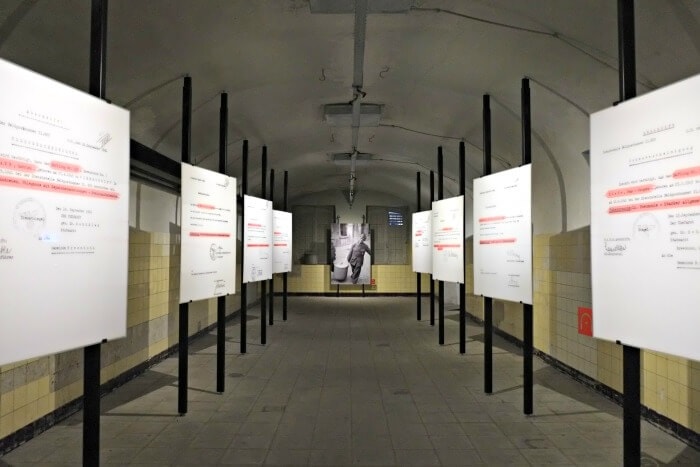
Informational panels at the Breendonk concentration camp
What is the history of Fort Breendonk?
Fort Breendonk was built in Belgium in the 1900s to defend Antwerp. The fort saw its first combat during the German invasion of Belgium in World War I. It was bombarded and badly damaged by howitzers before surrendering. In September 1940, the Nazis began using Breendonk as a prison camp, known as an Auffanglager. A torture chamber was also added for interrogating captives, with many tortured by the Gestapo. By 1943, mostly 3,500 prisoners remained with at least 300 dying from starvation, disease or execution. In September 1944, the Germans evacuated the fort due to the Allied advance. After liberation, it briefly held collaborators and German POWs before officially becoming a national memorial and museum in 1947. This preserved its structures nearly intact as a powerful reminder of Nazi atrocities on Belgian soil during WWII. Memorial ceremonies have been held there annually ever since.
What are the visiting hours of Fort Breendonk?
Fort Breendonk is open everyday and only closed on New Year’s Day and Christmas Day. From April through September, the visiting hours at Fort Breendonk are from 9:30 AM until 5:30 PM. The last admission is at 4:30 PM, giving visitors a full hour to complete their tour by closing time. In the winter months from October through March, the opening hours are shortened slightly, with the fort accessible from 9:30 AM to 5:00 PM daily. Again, the last admission is one hour before closing at 4:00 PM.
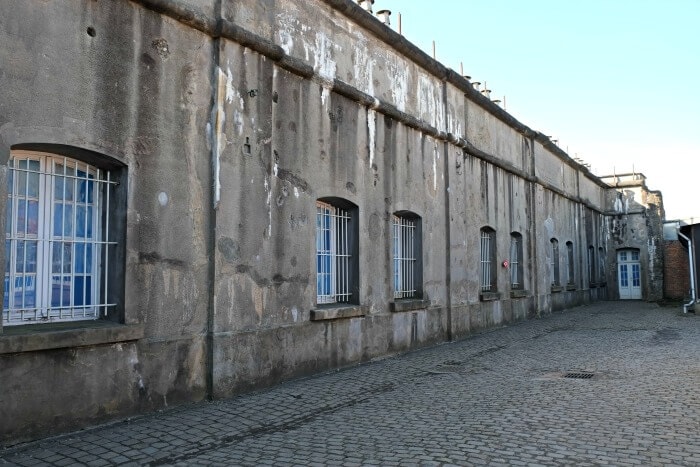
At the grounds of the Breendonk camp
When is the best time to visit Fort Breendonk?
The best time to visit Fort Breendonk is April to September. The weather is mildest and most pleasant during these months in Belgium, averaging between 15°C to 25°C (59°F to 77°F). Visitation also tends to be lower at Fort Breendonk during the winter season, making for a less crowded experience during spring and summer. Weekdays are typically less busy than weekends as well if aiming to avoid large tourist groups. Fort Breendonk is busiest in July and August when schools are on break.
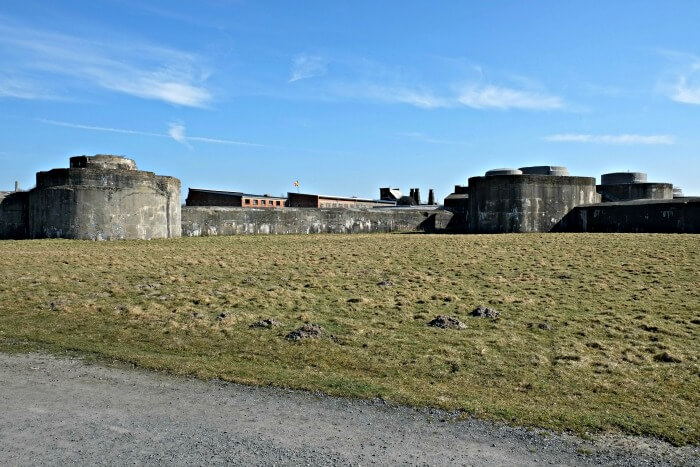
Walking the grounds around The National Memorial of Breendonk
Is it safe to visit Fort Breendonk?
Yes, visiting Fort Breendonk is very safe. The fort staff are on-site during all opening hours to assist guests and ensure proper care of the facilities. Groups such as schools are supervised by chaperones and teachers throughout their visits. There are no risks within the fort itself. It mainly consists of stone and concrete construction that has been stabilized and renovated. Fort Breendonk railings, fences and limitations on access prevent visitors from accessing unsafe areas like the moat or tops of walls. Since the audio tour guides guests along a set route, it is easy to avoid getting lost or venturing where you shouldn’t.
How much is the entrance fee for Fort Breendonk?
The entrance fee for visiting Fort Breendonk is €11 (US $11.78, £9.59) per adult. Discounted rates are available for senior citizens aged 65 and older, students, teenagers aged 6 to 18 and groups of 10 or more. Children under the age of 6 can enter free of charge.
How long can you stay in Fort Breendonk?
There is no time limit for how long visitors can stay in Fort Breendonk. Visitors are welcome to stay at Fort Breendonk for as long as they want from 9:30 AM until 5:00 or 5:30 PM. There are no restrictions on length of time spent at the memorial as long as guests arrive before the last admission deadline which is one hour before posted closing time.
How long is the typical visit time in Fort Breendonk?
Visitors to Fort Breendonk typically spend 2 to 3 hours. This is enough time to complete the self-guided audio tour, see the exhibits, reflect in the memorial spaces and gain a good overview of the site. The complete audio tour itself takes most visitors about 2 hours to make their way through the various stops. This includes listening to all the recordings and descriptions that detail the history. Those who want to fully appreciate the educational content should allow a full 2 hours for this component.
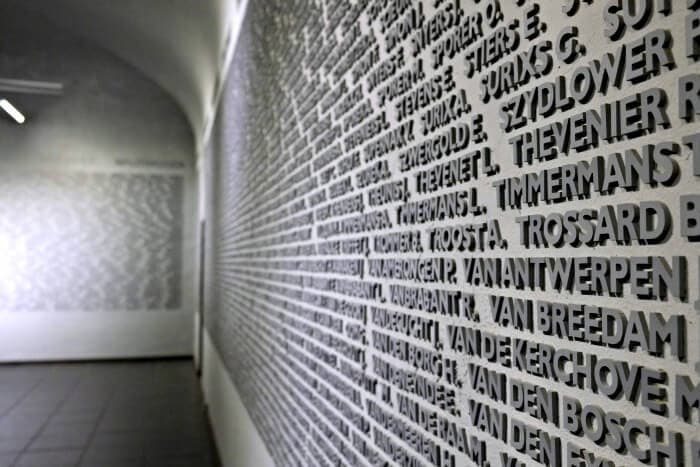
The names of people who’ve been held captive at Breendonk
How to get to Fort Breendonk?
Find below a list with the best ways to get to Fort Breendonk.
- By Car: Located just off the A12 highway between Antwerp and Brussels. Visitors can take junction 7 from Antwerp direction Mechelen/Brussels or junction 8 from Brussels direction Antwerp.
- By Train: From Antwerp, visitors can take a train to Mechelen, transfer to local line L towards Leuven. From Brussels, they can take a train to Mechelen, transfer to local line L towards Antwerp. Then taxi or bus 246 or 456 to fort from station
- By Bus: Visitors can take a metro bus 460 and it is a direct route from Brussels north station to fort. They can also take De Lijn bus 456 and also stop at the memorial.
- By Tour: Many Brussels and Antwerp tour companies offer half-day trips to Breendonk. Guided tour buses pick up at central locations in each city.
What are the house rules in visiting Fort Breendonk?
Find below the most important house rules of Fort Breendonk.
- No large bags allowed. For security, large bags, backpacks, luggage, etc. cannot be brought inside. A free bag check is available.
- Be quiet and respectful. Guests must maintain quiet, respectful conduct suitable for a memorial site. Disruptive noise or behavior is not allowed.
- No photography. Interior photos, videos and recordings are prohibited out of respect for victims. External shots are allowed.
- Stay on marked pathways. Visitors should only walk in designated areas and marked paths for safety and preservation.
- No artifact touching. Guards protect the relics so exhibits, structures and artifacts cannot be touched or disturbed in any way.
- Supervise children. Children must be supervised closely by parents/guardians throughout the visit given sensitive topics.
- No food or drink. Eating, drinking, smoking and chewing gum are not allowed within the memorial out of respect.
- Limit phone use. Phones should be silenced and used minimally during the visit to avoid disturbances.
- Follow staff instructions. Visitors must comply with instructions from memorial staff for safety and security.
- Dress appropriately. Guests should dress appropriately for a solemn site. No offensive images/text allowed.
What visitors say about Fort Breendonk?
Fort Breendonk receives positive feedback from visitors. Many comment on the stark realities of how poor the prison conditions were and the cruelty inflicted on inmates by their Nazi captors. Most find it a solemn memorial, given the suffering that occurred there under the Nazis. The audio tour conveys the grim conditions. Many say it’s emotionally draining yet moving to pay respects. Most visitors describe the memorial as well organized. Directions are clear and the audio guides provide excellent context. Some say visiting on a guided tour is ideal for added context.
What do we think about Fort Breendonk?
I visited Fort Breendonk in November 2021 and I’m glad I’m visiting by myself. This place makes me quiet. But I’m not the only visitor today. There are a couple of foreign tourists and a group of school kids. The kids, or teenagers rather, are about 13 years old. “That’s young to come to such a place”, I think, and I get a little closer to hear what their guide is telling them.
To my surprise, the guide doesn’t make things sound less gruesome than they were. She talks about the terrible treatment prisoners received here from the guards, and how many people died here.
I still don’t how I’d tell a group of kids about the history of the Fortress of Breendonk – and I don’t know if I ever could – but I did notice that these kids seemed interested. They didn’t play when their teachers didn’t see it or make a lot of noise. They were listening attentively and asking questions after each explanation.
I wonder if they’re less sensitive to the stories, as if the history of Fort Breendonk is just that to them – history. Obviously, I didn’t ask them, but I do hope nobody ever becomes insensitive to what has happened here and throughout World War II, and I also hope there will always be teachers and guides taking it upon them to explain this part of history to younger generations.
I left the group again and continued with the tour. There are arrows all throughout the Fortress of Breendonk telling you where to go. This way, the halls inside and paths outside of the Fortress have become like a one-way street and you can never get lost.
At a certain moment, I happened upon another group. Adults, this time. Foreign tourists. They were being lead by a guide who’d taken them into the room you see pictured below. This room is normally not accessible, but I was lucky to be able to go in with them.
Well, “lucky” is maybe not the correct worth, as the things you’ll feel while visiting Fort Breendonk are anything but positive emotions due to the stories you’re confronted with.
The room below holds several urns with the ashes of people who’ve died in different concentration camps as well as the names of more than 3,500 who were held captive at this particular camp in Belgium.
Finally, I stepped outside again. The visit ended where it began: in front of the entrance of the Fort Breendonk. Does this place make you happy? Obviously not. Should you visit it? Absolutely. A part of Belgian, European and even world history is very well explained here and kept alive so that new generations will never forget.
The Fort Breendonk National Memorial wants to show visitors what life at this prison was like. That happens through information signs, but also with an audio guide and interviews with former prisoners displayed on screens throughout the Fort.
Walking around through the halls and rooms, it feels as if Fort Breendonk has been left completely unchanged. The severe cold inside – I’m shivering even with a hat and my winter jacket on – contrasts yet again with the blue sky outside, as does the grey exterior of the building.
Is it worth it to visit Fort Breendonk?
Yes, visiting Fort Breendonk is absolutely worth it. Many visitors believe a visit to Breendonk should be considered mandatory for all Belgian students due to its historical significance. Fort Breendonk’s convenient location in Belgium makes it much more accessible than sites in Poland, Germany or beyond. Visitors say all generations should make the effort to experience its powerful impact. Fort Breendonk is one of the most unique things to do in Belgium.
Are there any guided tours to Fort Breendonk?
Yes, Fort Breendonk offers guided tour options in addition to the self-guided audio tour. These provide more in-depth explanations, context and insights compared to visiting individually with an audio guide. Public guided tours are available daily at 11:15 AM and 1:30 PM in Dutch, French and English. Many tour companies in Brussels, Antwerp, Bruges and other Belgian cities offer half-day coach tours to Breendonk as well. These trips include round-trip transportation, admission fees and a guided tour of around 1.5 hours with a professional guide.
PIN FOR LATER

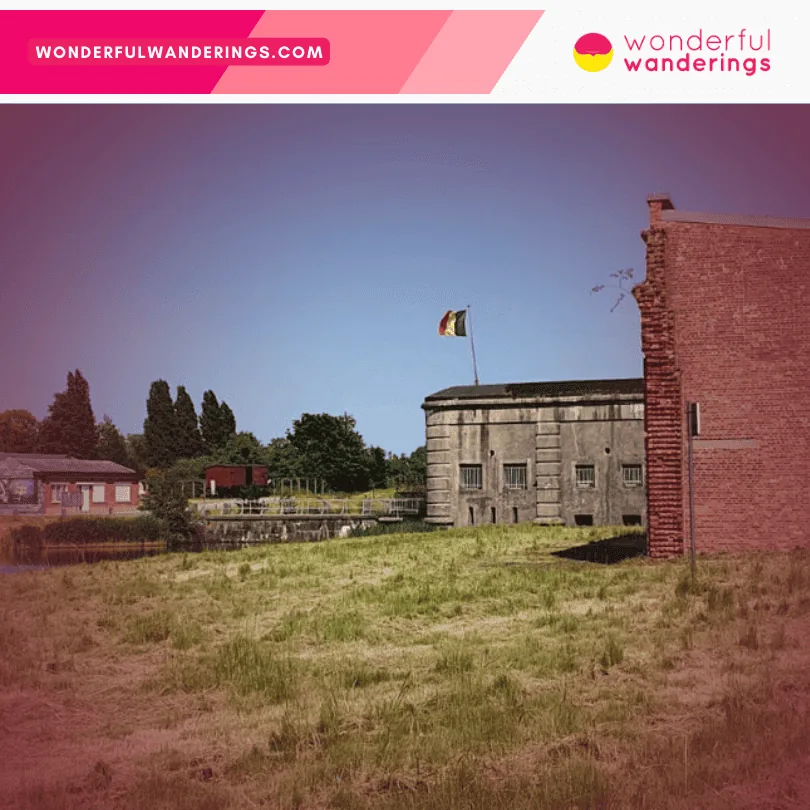
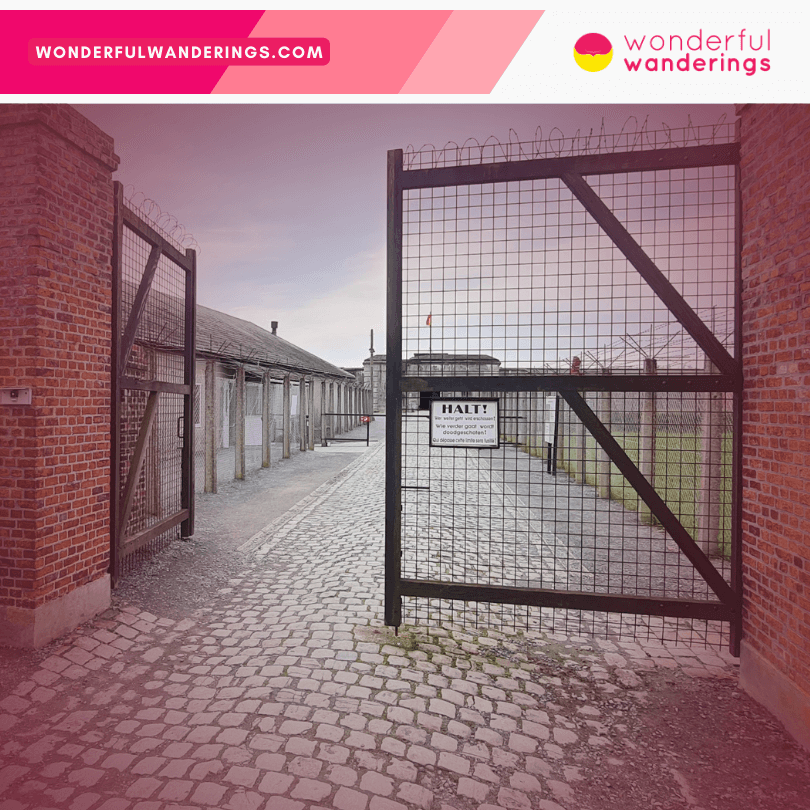
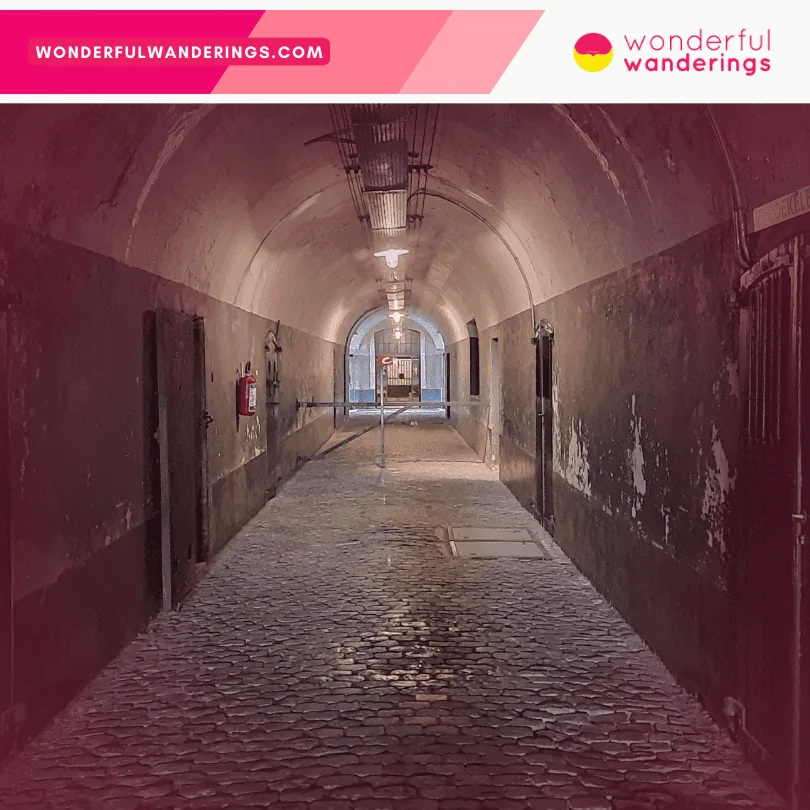
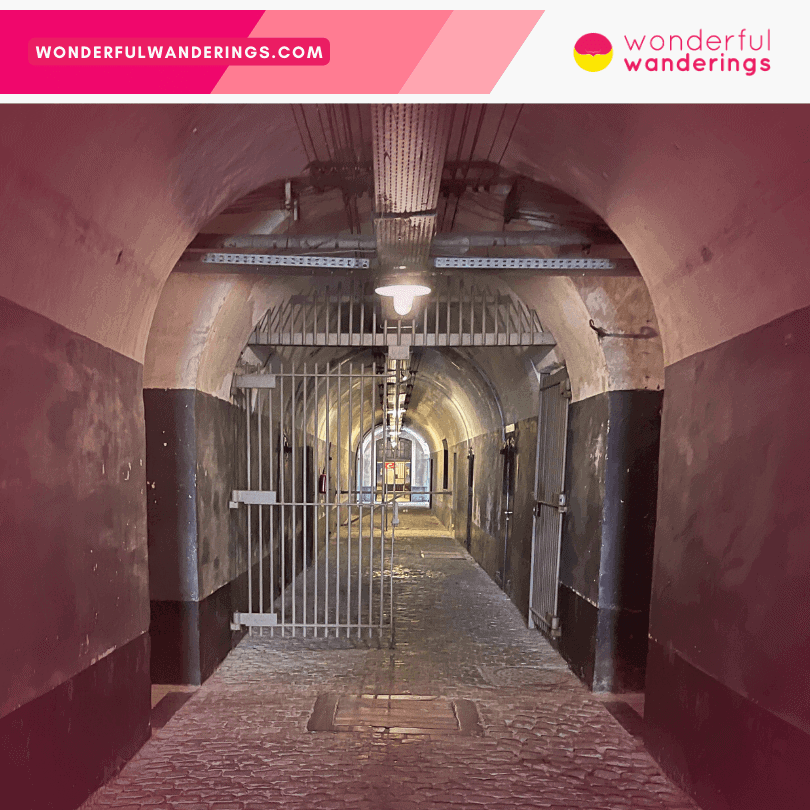
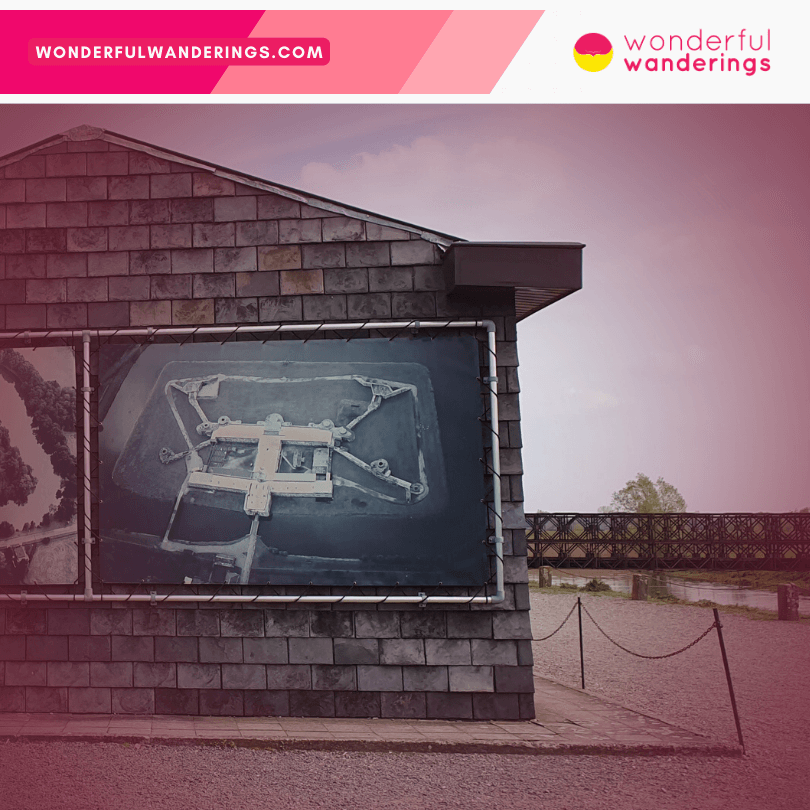
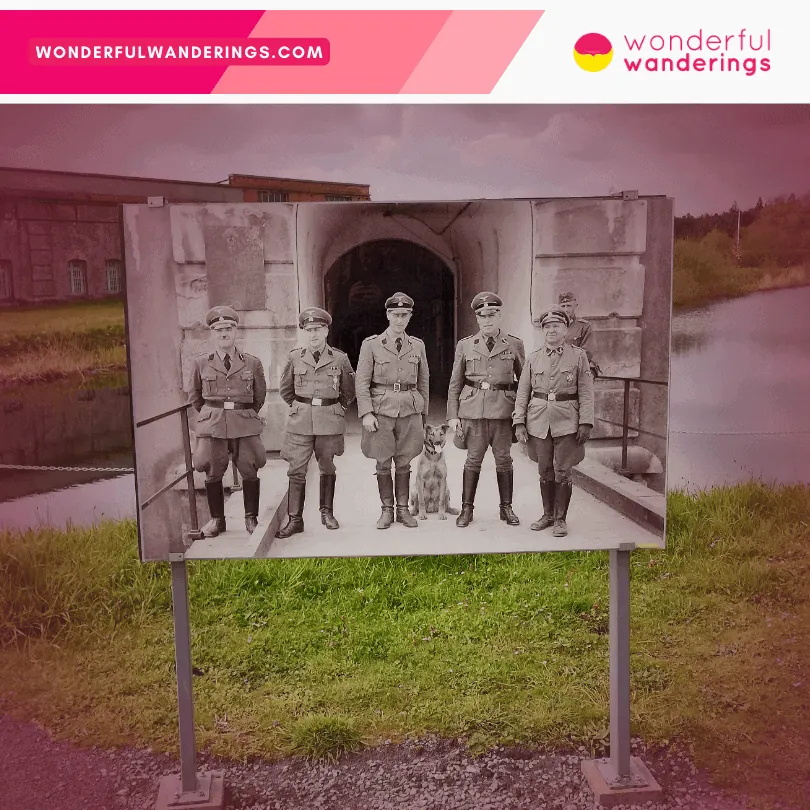
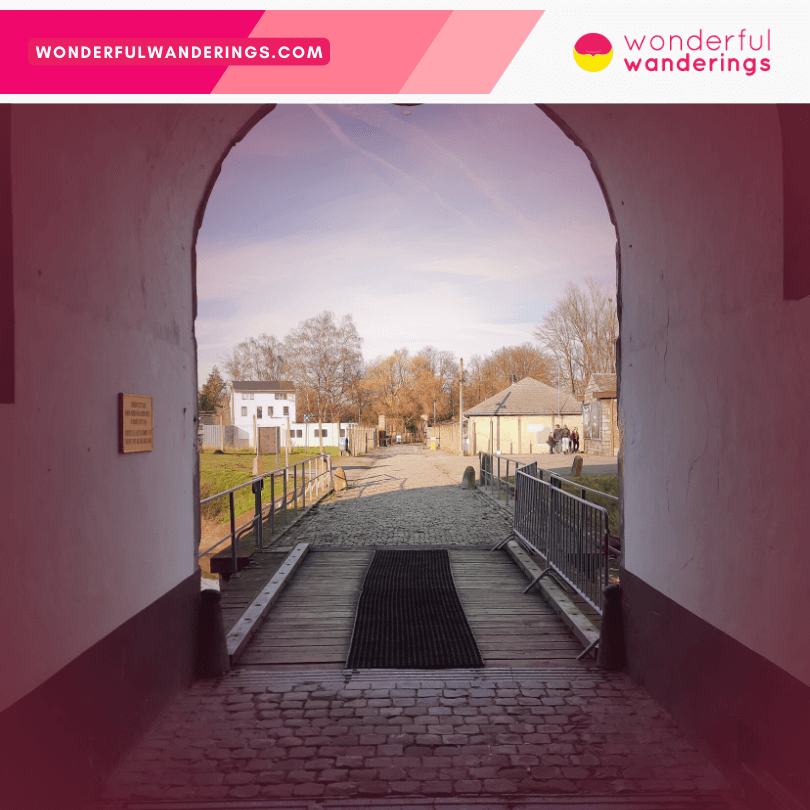
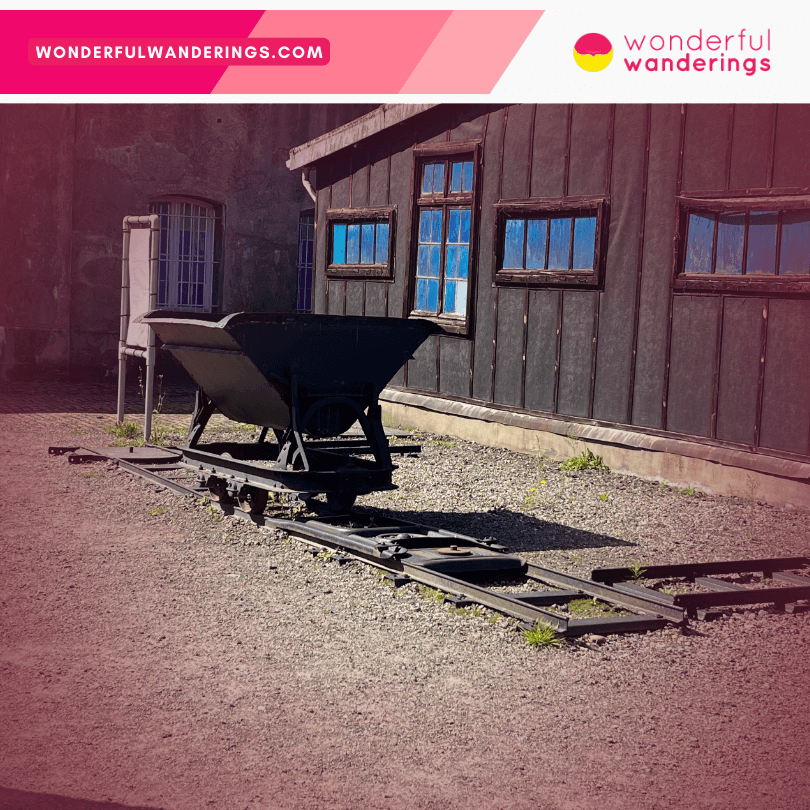
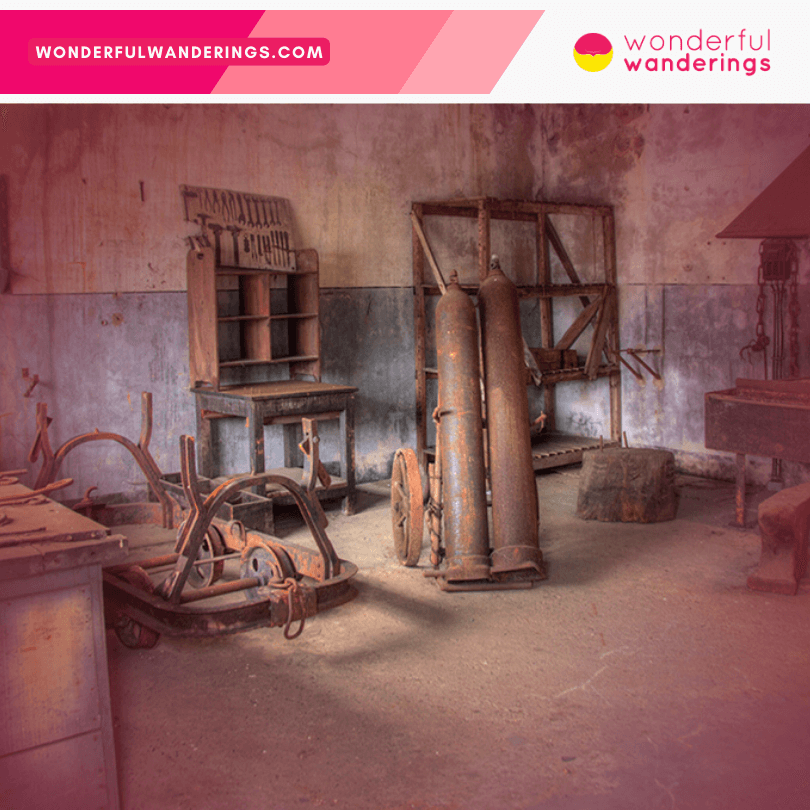



Kayla says
I remember going there a couple years ago and it is such a strange, sad feeling you get when walking through the main building. It is not a concentration camp, I had heard of before I traveled to Belgium however I am glad I got the chance to explore, although it is a very sad place. I too wrote about my experience, here is the link to my post if you would like to read it. https://abookofmaps.blogspot.ca/2014/03/breendonk-concentration-camp-place-of.html
Sofie says
It’s liek you say: not a happy place, but one I do think you should visit, especially if you want to understand Belgian and European history a bit.
The Guy Who Flies says
Fascinating read and history Sofie.
It is a tragic tale that such a fortress was built to protect the people of Belgium yet turned out to be a place of such horror for them.
This article is also very fitting as we are at the 70th anniversary of the liberation of so many concentration camps. Only yesterday the BBC were recalling their news reports from that time and making radio broadcasts as to what western journalists saw.
I myself have visited Auschwitz, probably the most famous concentration camp at all. Thankfully your article helps to highlight that there were so many of these horror locations across Europe during those dark days.
Like you say, I hope history does not dampen down the reality and somberness of these events. We are supposed to learn from history and hopefully future generations will sense this as being as real as we do today.
Sofie says
Hey, that’s strange, I just had to approve your comment here while you’ve commented so often already!
I’m glad you found it interesting Guy (or was I going to call you “Dude”?:p).
It is quite ironic, isn’t it. And I’m afraid it’s not the only time that happened. I’ve got a post scheduled about another fort in Belgium that was built to protect Belgium against attacks, but kind of failed to do so.
I have yet to visit Auschwitz myself. It’s something I want to do, but also not. I’m sure you know what I mean.
It’s important to keep writing and talking about things like this, so that they’re never forgotten or minimalized.
The Guy Who Flies says
Strange, maybe I should enter my name as “Due” to get auto approval ;-)
Yes, I fully understand how you feel about Auschwitz. I must admit that when I was there the emotion of all that I saw didn’t hit me. I’m not saying I am heartless at all. I think it was a sub-conscious self defence mechanism. I think if I fully comprehended emotionally what I was seeing then I wouldn’t be able to handle it. (Hope that makes sense.)
I hope you do make it there one day. Purely because so many people suffered there, it is an enduring monument and we owe them our respect for all that they suffered.
Hope to see your second Belgium related article at some point :-)
Sofie says
I think you should.
It makes sense. I’m afraid the opposite would be true for me. I’m pretty sensitive. When I see horrid stuff on the news, it can haunt me for days and I have to force myself not to think about it anymore. Which is why I’ve actually stopped watching the news. I read the papers, that’s bad enough.
But I’ll definitely go one day. I just need to make sure I plan something fun to do afterwards.
Oh I’ve got maaaaany articles on Belgium planned for the following two months :-)
Johannes says
This was great. However, I do have a question. In this case, we shall be taking public transit. Sometimes there are short cuts or helpful hints. Would it be better to travel to Fort Breendonk from Antwerp or Brussels? Wish you would have put a bit of information about “getting there.” Thanks for the tips about it being cold! That is very helpful as one of the family is extremely sensitive to cold temperatures.
Sofie says
Hey Johannes,
The public transport connections can change throughout the year and I have over 600 posts on this blog. It would be too much work for me to keep them all up-to-date if I’d have to include bus connections and the like.
That’s why I prefer not giving that information, rather than having it be incorrect.
However, you can always check the website of De Lijn (buses in Flanders) or the NMBS (trains in Belgium) for up-to-date information.
Hope you have a great visit!